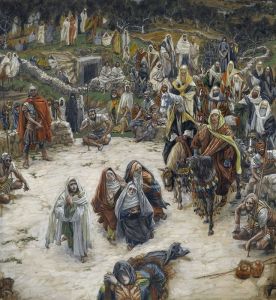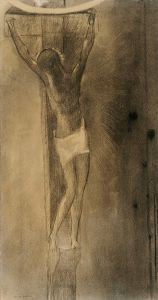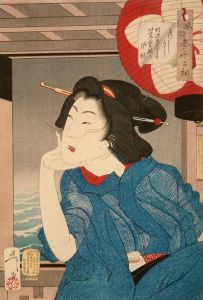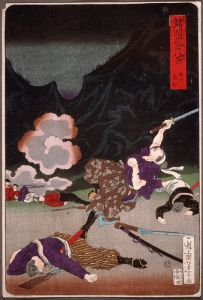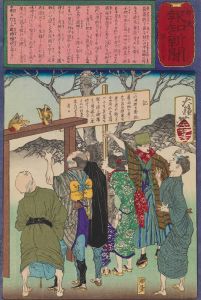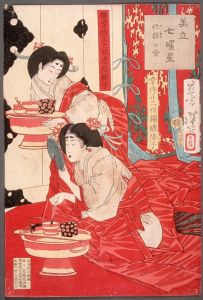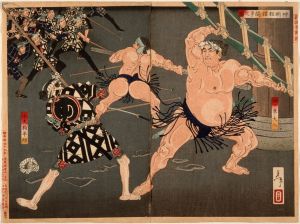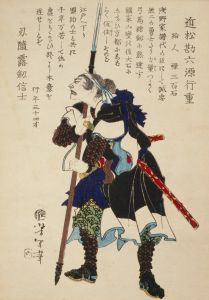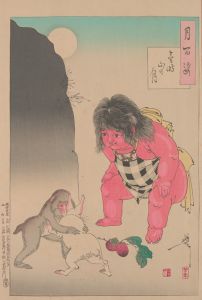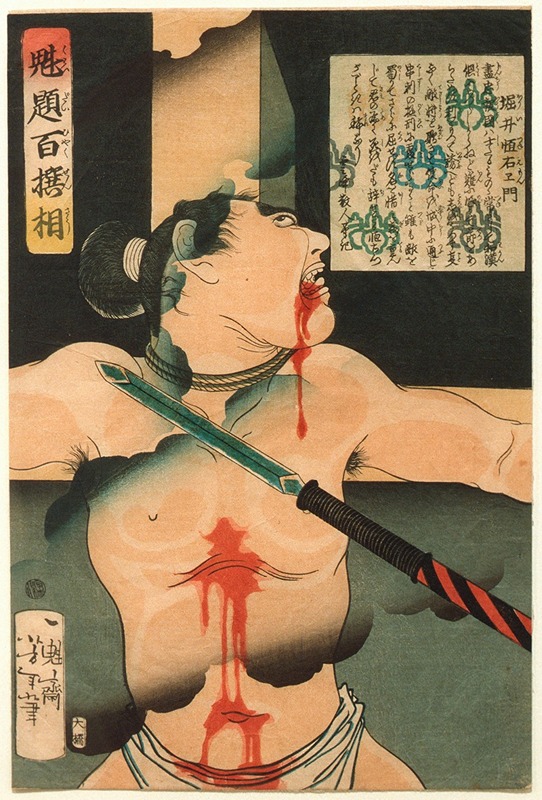
Horii Tsuneemon Crucified
A hand-painted replica of Tsukioka Yoshitoshi’s masterpiece Horii Tsuneemon Crucified, meticulously crafted by professional artists to capture the true essence of the original. Each piece is created with museum-quality canvas and rare mineral pigments, carefully painted by experienced artists with delicate brushstrokes and rich, layered colors to perfectly recreate the texture of the original artwork. Unlike machine-printed reproductions, this hand-painted version brings the painting to life, infused with the artist’s emotions and skill in every stroke. Whether for personal collection or home decoration, it instantly elevates the artistic atmosphere of any space.
"Horii Tsuneemon Crucified" is a woodblock print created by the renowned Japanese artist Tsukioka Yoshitoshi (1839–1892), one of the last great masters of the ukiyo-e tradition. This artwork is part of Yoshitoshi's series titled "Biographies of Modern Men" (Kinsei Kyōgiden), which was published in the late 19th century. The series depicts historical and legendary figures, often highlighting themes of loyalty, bravery, and sacrifice.
The print portrays Horii Tsuneemon, a samurai who became a celebrated figure during the Siege of Okazaki in 1575, a key event in Japan's Sengoku period. Tsuneemon served under the Tokugawa clan and is remembered for his extraordinary act of loyalty and courage. During the siege, Tsuneemon volunteered to sneak through enemy lines to deliver a critical message requesting reinforcements. Although he successfully completed his mission, he was captured by the opposing Takeda forces on his return. Refusing to divulge any information about the Tokugawa plans, Tsuneemon was executed by crucifixion, a punishment intended to serve as a warning to others.
Yoshitoshi's depiction of Tsuneemon's crucifixion is both dramatic and poignant, emphasizing the samurai's stoic acceptance of his fate. The composition reflects Yoshitoshi's mastery of emotional intensity and his ability to convey the psychological depth of his subjects. The use of bold lines and vivid colors typical of ukiyo-e prints enhances the visual impact of the scene, while the detailed rendering of Tsuneemon's expression and posture underscores his unwavering resolve.
This artwork is significant not only for its artistic merit but also for its historical and cultural resonance. It exemplifies the values of loyalty and self-sacrifice that were highly esteemed in samurai culture and continues to be remembered as a powerful representation of these ideals. As with many of Yoshitoshi's works, the print combines traditional ukiyo-e techniques with a modern sensibility, reflecting the transitional period in which he worked.
Today, "Horii Tsuneemon Crucified" is regarded as an important example of Yoshitoshi's later works and a testament to his enduring legacy in Japanese art. The print is studied for its historical context, artistic style, and its role in preserving the stories of Japan's feudal past.






